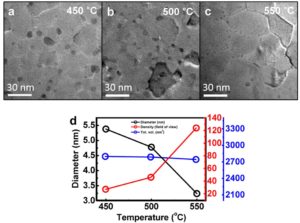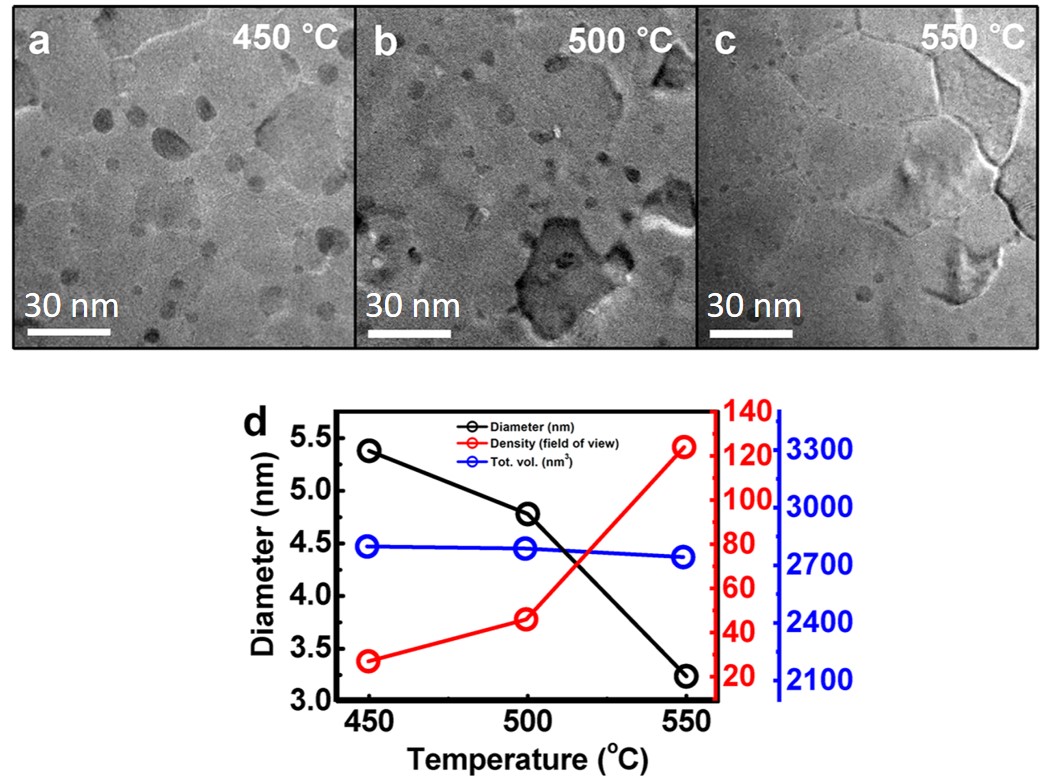Researchers at the Gwangju Institute of Science and Technology (GIST) and Korea Advanced Institute of Science and Technology (KAIST) used a Hummingbird Scientific TEM Gas Cell Heating holder to study spontaneous heterogeneous nucleation of cobalt particles. Using this technique, they developed a strategy to achieve, at the same time, small particle sizes and high particle densities by controlling the temperature, oxygen partial pressure, and ramping rate of the temperature during synthesis.
Specifically, their work focuses on quantitative analyses of cobalt particles exsolved on Sr0.98Ti0.95Co0.05O3−δ films by in-situ TEM and ex-situ SEM. It reveals that, contrary to previously published exsolution examples, increasing temperature and decreasing the oxygen partial pressure lead to smaller particle sizes with higher density levels after growth.

In-situ TEM of Co exsolution samples from Sr0.98Ti0.95Co0.05O3−δ (STC) thin films: (a−c) TEM BF images of STC thin films after the Co particle growth. (d) Diameter (black), density (red), and total volume (blue) of the exsolved cobalt particles. Copyright © 2020 American Chemical Society
In the paper, they also show that the nucleation thermodynamics dictates the counterintuitive particle characteristics behavior they observe. This behavior is attributed to the specific exsolution conditions in which particle interactions are minimized, and all the Co atoms are exsolved under highly reducible conditions.
Finally, they demonstrate the feasibility of their strategy to achieve small particle sizes and high particle densities via CO oxidation with typical powder-based catalysts. This suggests that the method they developed can be extended to various (electro)chemical applications. They published their work in ACS Applied Materials and Interfaces.
Reference: Exceptional Tunability over Size and Density of Spontaneously Formed Nanoparticles via Nucleation Dynamics, Jun Kyu Kim, Yong-Ryun Jo, Seunghyun Kim, Bonjae Koo, Jun Hyuk Kim, Bong-Joong Kim, and WooChul Jung, ACS Appl. Mater. Interfaces 2020, 12, 21. Abstract
View All News

